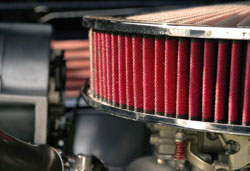Improved eco-friendly combustion engines
The COMET project focused on developing a coated sintered metal trap for the needs of the heavy-duty application. The work involved the modification of an engine to include appropriate exhaust gas re-circulation for improved injection/combustion. Special care was taken to enhance the engine's characteristics for minimising NOx (nitrogen oxides) as well as limiting the particulate material. Having characterised the filter material in terms of its filtration efficiency, backpressure and regeneration performance, further investigations on material corrosion were conducted. These provided valuable information on the filter operation temperatures. Moreover, ash and soot deposit properties were also sought and characterised. One of the most important parts of project work involved study of the reactivity of diesel soot deposited on a metallic filter. This offered valuable insight on the reaction mechanism of diesel soot with exhaust gases, such as nitrogen dioxide, and oxygen without neglecting the water vapour effects. The impact of an oxidising catalyst on the reaction mechanism and the kinetics of soot combustion were also investigated. With the aid of a specialised kinetic model, applicable where a thin layer of soot is deposited on the filter, the effects of exhaust gas components were validated. The kinetic model can be employed in studies requiring a complete prototype of the soot trap regeneration mechanism. Project results can improve the prediction and validation of the regeneration strategy of soot traps leading to eco-friendlier and better performing combustion engines.



